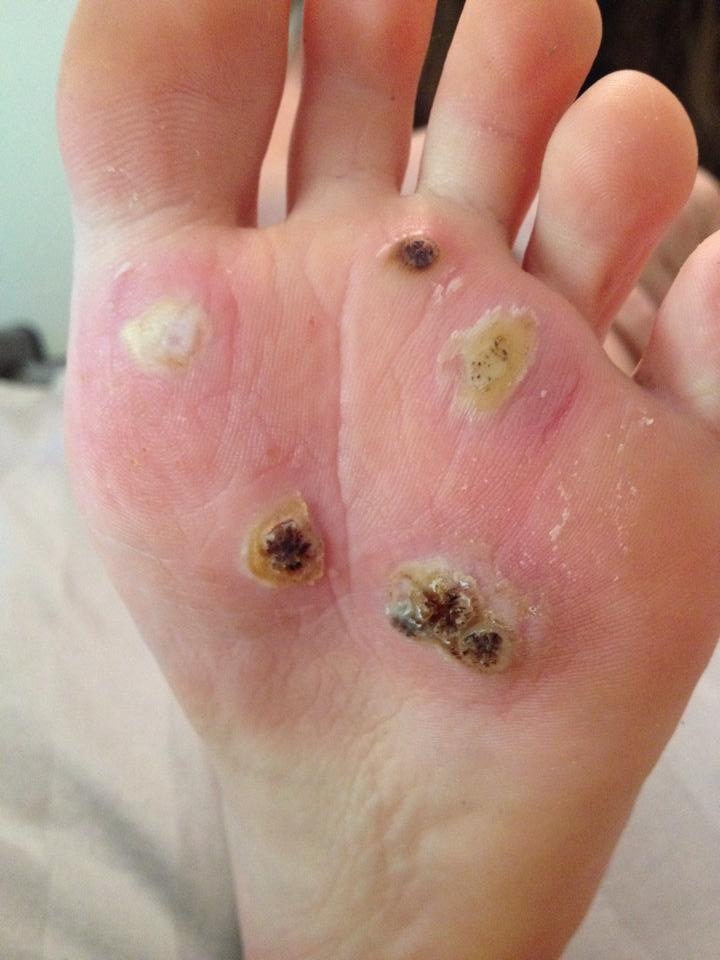Page Contents
Getting Rid Of Plantar Warts Is Imperative…why?
Getting rid of plantar warts is essential since plantar warts are very infectious. Warts are small and rough tumors that grow on your skin, more commonly found on hands and feet. Planters warts on feet are correctly known known as plantar warts; the term planters warts is also widely used. Warts can however also grow on other parts of your body. Genital warts statistics show that the occurrence of genital warts are on the increase. Warts are very common and generally they are non-cancerous.

The shape of a wart usually resembles a cauliflower or a blister. Its color is different from the color of the surrounding skin, and is usually darker or lighter.
The different types of warts that exist are caused by a virus called the human papilloma virus or HPV, and are very contagious. One person can thus quite easily infect another with the virus. Whenever in doubt about any skin condition, it is strongly advised you consult your physician before removing any growths yourself.
The Warts STOP Here!
Man Who Limped With Foot Pain –
Now Runs 2 Miles Every Day
Unhappy With Your Bust Size?
There’s A Completely Safe and Inexpensive Breast
Enhancement That is 100% All-Natural and Easy to Use.
The 4 main types are: Plantar, Flat, Genital and Common
Warts on bottom of feet are plantar warts; also referred to as foot warts and planters warts. They usually are very flat because of the pressure caused by walking. The constant pressure forces this type of wart to grow back inside the foot! These pictures of plantar warts clearly show the “flat” appearance. Getting rid of plantar warts is possible; one needs to gather information on the different planters wart removal options available. It is best to make an informed decision on which planters wart treatment method will safely and effectively remove the warts.
Flat warts are smoother and much smaller than the other types of warts. These are light in color and tend to be subtle variations from the skin pigmentation. Typically found on the arms, knees, and hands. Common warts are often found on the hands and fingers, especially in areas where the skin has been broken by ripped hangnails or broken nails. Warts on toes are also of the common wart type. More planters warts pictures show how bad warts can get if not treated.
Getting Rid Of Plantar Warts – Plantar Warts Treatment Options
How to get rid of warts on feet? How you go about getting rid of plantar warts is a personal choice, it is however necessary to consider the severity of the wart. A home remedy for warts is often the preferred option, since one can apply the remedy in the privacy of your own home. Learn about treatment for plantar warts options generally available; these include electrosurgery, laser therapy, cryosurgery and over the counter medications (i. e. duct tape) as well as other home treatments. Each of these are discussed at length in how to get rid of warts.
Getting rid of plantar warts: what to consider?
Plantar warts, as with genital warts, are very contagious and need to be treated to avoid infecting others. Many individuals make the decision to remove their own warts. While this is possible to do, there are a number of important things that you need to consider and keep in mind.
The decision to remove your own warts is not the only one to make. You need to also consider the plantar warts treatment options available in getting rid of warts. These options include, but may not be limited to, home remedies and over-the-counter medications. If you are interested in using a home remedy in getting rid of plantar warts, you can easily find a number of home remedy recipes online. If over-the-counter wart removal products are more your style, you should be able to purchase these products online or from one of your local retail stores.
Probably the most important thing to keep in mind are the risks associated with removing your own warts. The method(s) you choose in getting rid of your genital, plantar, flat and/or common warts may increase the risk. That is why it is extremely important to choose a wart removal method that is not only effective, but safe. It is never safe or wise to cut off your wart, as this will result in infection or scarring. Rather find a simple home remedy or purchase one of the many over-the-counter wart medications that are currently available. These methods are often a safer and healthier alternative. I personally always look for products with many testimonials, as well as a money-back guarantee.
Apart from the method, you must also consider the location and size of the wart(s) to be removed. Most home remedies for warts guide you on the application and which warts can be removed effectively. It is advised you always follow application directions for each remedy. Some of the home remedies need to be applied three times daily for a month before you get rid of the wart(s), which essentially means you can spend all this time without achieving the desired results.
Please note, neither your doctor, nor any of the over the counter medications, or home remedies can offer any guarantee that your warts will not grow back again, even if the method you chose in getting rid of the warts was successful. This commonly happens, even to people who had their warts professionally removed.
